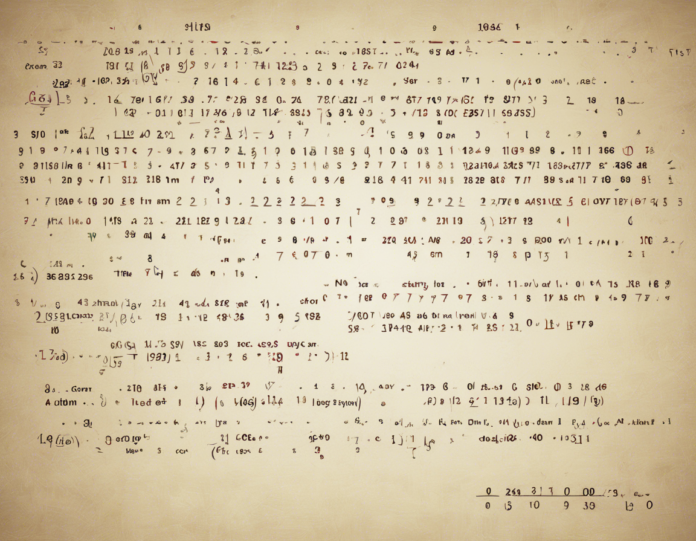In Java programming, developers often come across the need to calculate the sum of digits in a given number. This task might seem simple at first glance, but it involves a series of steps that need to be carefully followed. In this comprehensive guide, we will delve into the process of calculating the sum of digits in Java, exploring various techniques and methods to achieve this effectively.
Understanding the Problem Statement
Before diving into the code implementation, it’s crucial to understand what calculating the sum of digits in Java actually means. Essentially, given an integer value, the objective is to extract individual digits from the number and then find the sum of these digits.
For example, if we have the number 123, the sum of digits would be 1 + 2 + 3 = 6. This concept can be extended to numbers of any length, making it a versatile problem to solve.
Method 1: Using Modulo Operator (%)
One of the most common approaches to calculate the sum of digits in Java involves using the modulo operator (%). This operator helps extract the rightmost digit of a number, which can then be added to an accumulator variable to keep track of the sum.
Let’s take a look at the implementation of this method:
java
public int sumOfDigits(int num) {
int sum = 0;
while (num != 0) {
sum += num % 10;
num = num / 10;
}
return sum;
}
In this code snippet, we initialize a variable sum to store the sum of digits. We then enter a while loop that continues as long as the number num is not equal to 0. Within each iteration, we extract the rightmost digit using num % 10 and add it to sum. We then update num by dividing it by 10 to shift to the next digit.
Once num becomes 0, the loop exits, and we return the final sum of digits.
Method 2: Converting to String and Iterating
Another approach to calculating the sum of digits involves converting the number to a String and then iterating over each character to extract and sum the digits. While this method may not be as efficient as the previous one, it provides an alternative way to solve the problem.
Here’s how you can implement this method:
java
public int sumOfDigits(int num) {
int sum = 0;
String numStr = String.valueOf(num);
for (int i = 0; i < numStr.length(); i++) {
sum += Character.getNumericValue(numStr.charAt(i));
}
return sum;
}
In this code snippet, we first convert the integer num to a String using String.valueOf(num). We then iterate over each character of the string using a for loop, extracting the numeric value of the character using Character.getNumericValue() and adding it to the sum variable.
While this method achieves the desired result, it involves additional String manipulation, which can impact performance for large numbers compared to the modulo operator approach.
Method 3: Recursion for Calculating Sum of Digits
Recursion is another powerful technique that can be employed to calculate the sum of digits in Java. By breaking down the problem into smaller sub-problems, we can create a recursive function that simplifies the computation.
Let’s see how recursion can be used to find the sum of digits:
java
public int sumOfDigits(int num) {
if (num < 10) {
return num;
}
return num % 10 + sumOfDigits(num / 10);
}
In this recursive function, we first check if the number num is less than 10. If it is, we simply return num as the base case. Otherwise, we extract the rightmost digit using num % 10, add it to the result of the recursive call with the number divided by 10 (num / 10), effectively reducing the problem size.
Recursion provides an elegant solution to the problem, although it might not be as efficient as iterative methods due to the overhead associated with function calls.
Choosing the Right Method
When it comes to calculating the sum of digits in Java, choosing the appropriate method depends on various factors such as performance requirements, code readability, and personal preference. Here’s a quick comparison of the methods discussed:
- Modulo Operator (%): Efficient and direct method for extracting digits, suitable for most scenarios.
- String Conversion: Simple and readable approach but may have performance implications for large numbers.
- Recursion: Elegant solution for the problem but may incur additional overhead.
Developers should evaluate these methods based on the specific requirements of their application to determine the most suitable approach.
Common Pitfalls to Avoid
While calculating the sum of digits in Java, there are some common pitfalls that developers should be mindful of:
- Handling Negative Numbers: Ensure proper handling of negative numbers by considering absolute values or specific requirements.
- Integer Overflow: Be cautious of integer overflow when dealing with large numbers, which can lead to unexpected results.
- Input Validation: Validate input to handle cases where non-numeric characters are provided as input.
- Efficiency: Choose the method that best balances efficiency and readability based on the context of the problem.
By being aware of these potential pitfalls, developers can write robust and reliable code for calculating the sum of digits in Java.
FAQs on Calculating Sum of Digits in Java
- Can the sum of digits in Java be calculated for floating-point numbers?
-
The sum of digits problem is typically applied to integer values. For floating-point numbers, the approach would differ based on rounding, precision, and handling of decimal points.
-
How do I calculate the sum of digits for a negative number in Java?
-
To handle negative numbers, you can consider taking the absolute value of the input before applying the sum of digits logic to ensure consistency.
-
Is there a built-in method in Java to calculate the sum of digits directly?
-
Java does not have a built-in method specifically tailored for calculating the sum of digits. Developers need to implement custom logic using techniques like modulo operator, string conversion, or recursion.
-
What is the best method for calculating the sum of digits in terms of performance?
-
The modulo operator (%) method is often preferred for its efficiency in extracting digits directly. However, the best method may vary based on specific requirements and constraints.
-
Can the sum of digits problem be extended to handle hexadecimal or other base numbers?
-
While the sum of digits problem is commonly applied to decimal numbers, it can be adapted to other bases by adjusting the extraction and summation logic accordingly.
-
Are there any libraries or APIs in Java that simplify the calculation of the sum of digits?
-
Java standard libraries do not include pre-built functions for summing digits. Developers can create custom methods using the available language features.
-
How can I optimize the performance of my sum of digits calculation for large numbers?
-
For improved performance, consider choosing an efficient method like the modulo operator approach and minimizing unnecessary conversions or iterations.
-
What are some real-world applications of calculating the sum of digits in Java programming?
-
The sum of digits calculation is commonly used in encryption, data validation, algorithms, and mathematical operations where individual digits play a significant role.
-
Are there advanced mathematical techniques that can be applied to optimize the sum of digits calculation further?
-
While the basic methods suffice for most scenarios, advanced mathematical concepts like number theory can offer optimizations for specific use cases.
-
How can I test the accuracy of my sum of digits calculation implementation in Java?
- Validate your implementation by writing test cases that cover edge cases, boundaries, and specific scenarios to ensure the correctness and reliability of the calculated results.
By addressing these frequently asked questions, developers gain a deeper understanding of the nuances surrounding the calculation of the sum of digits in Java and can navigate the implementation process with confidence.
Conclusion
In this in-depth guide, we’ve explored various methods for calculating the sum of digits in Java, ranging from the modulo operator and string iteration to recursive solutions. By understanding the problem statement, choosing the right method, avoiding common pitfalls, and addressing key FAQs, developers can approach the sum of digits calculation task efficiently and effectively.
Whether you opt for the direct approach of using the modulo operator, the simplicity of string conversion, or the elegance of recursion, mastering the art of summing digits opens up avenues for creative problem-solving and algorithmic prowess in Java programming. Remember to tailor your approach based on the specific requirements of your application and strive for a balance between performance, readability, and accuracy in your code.









